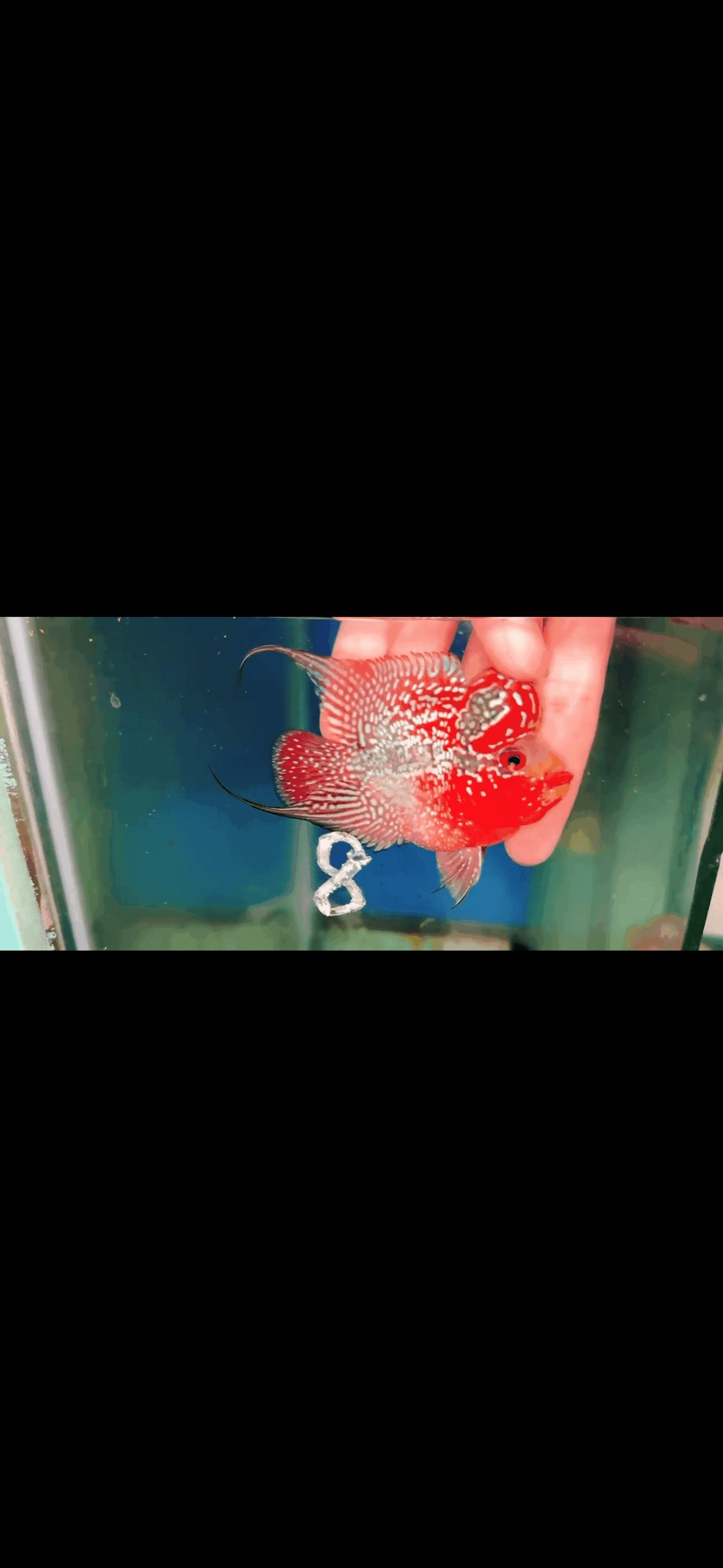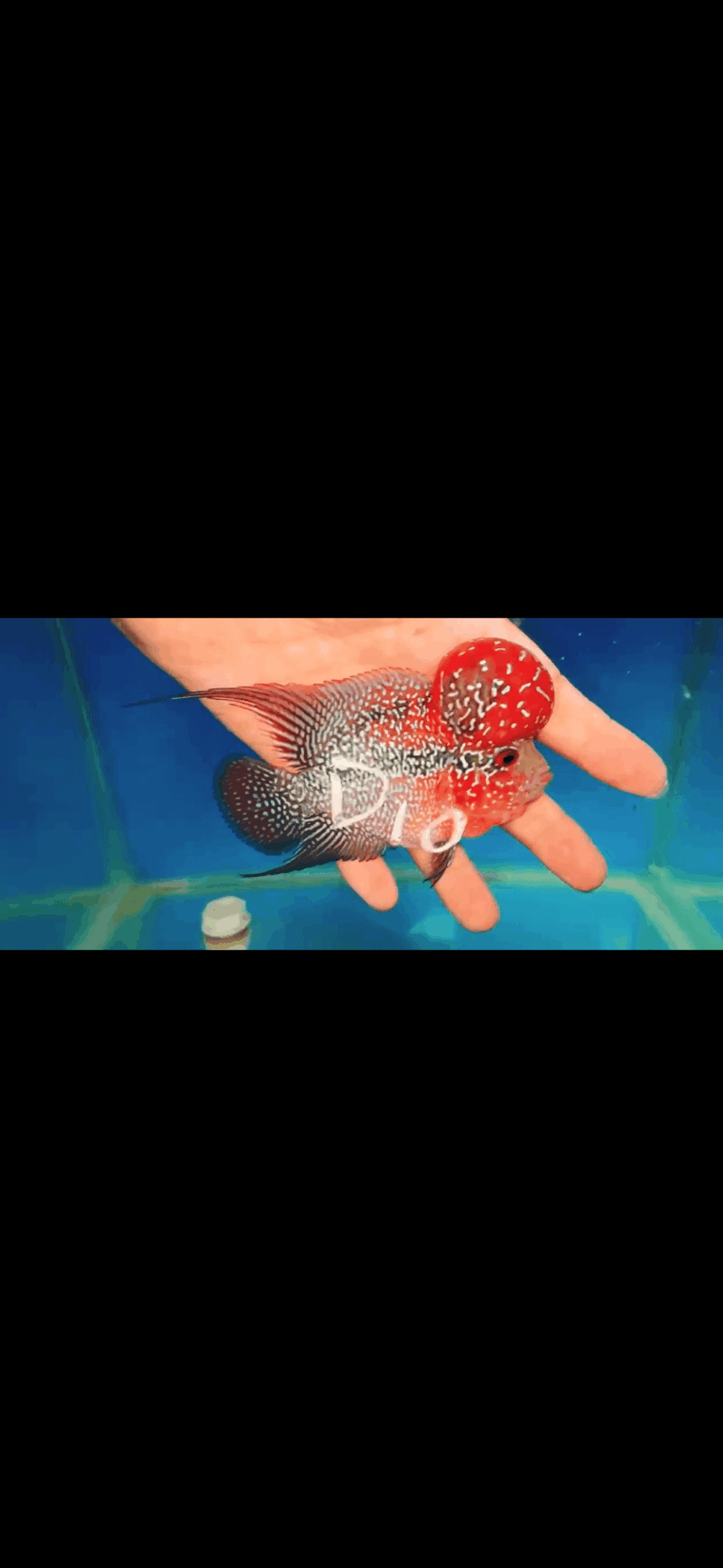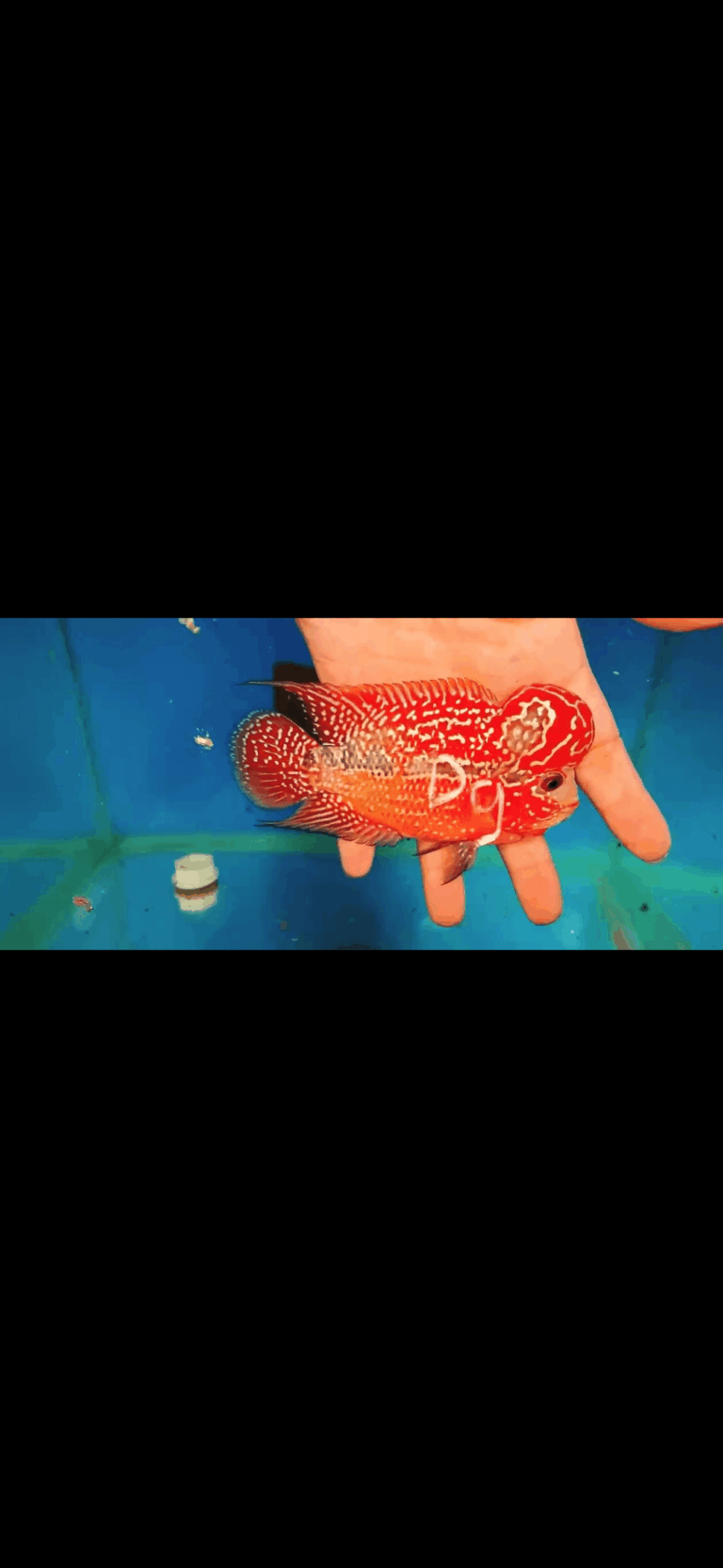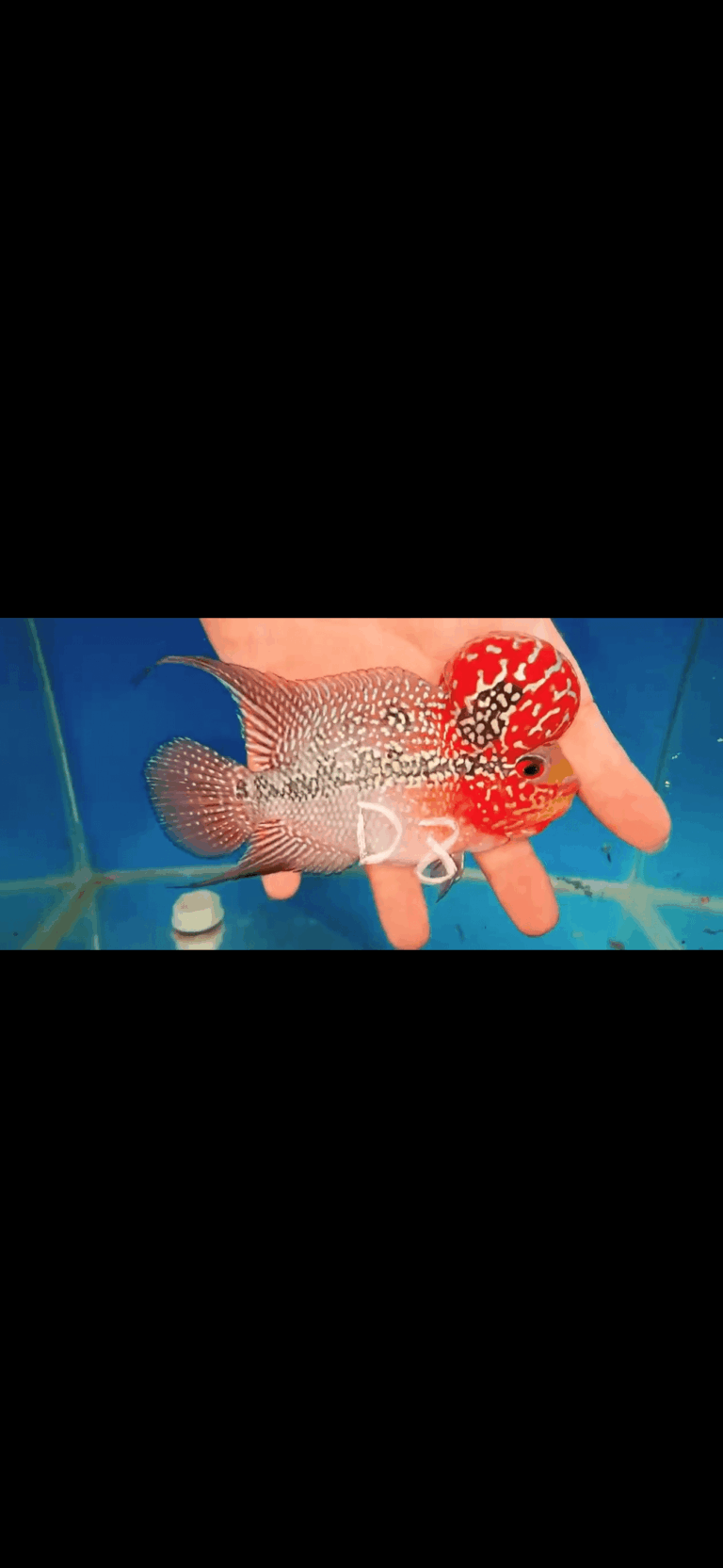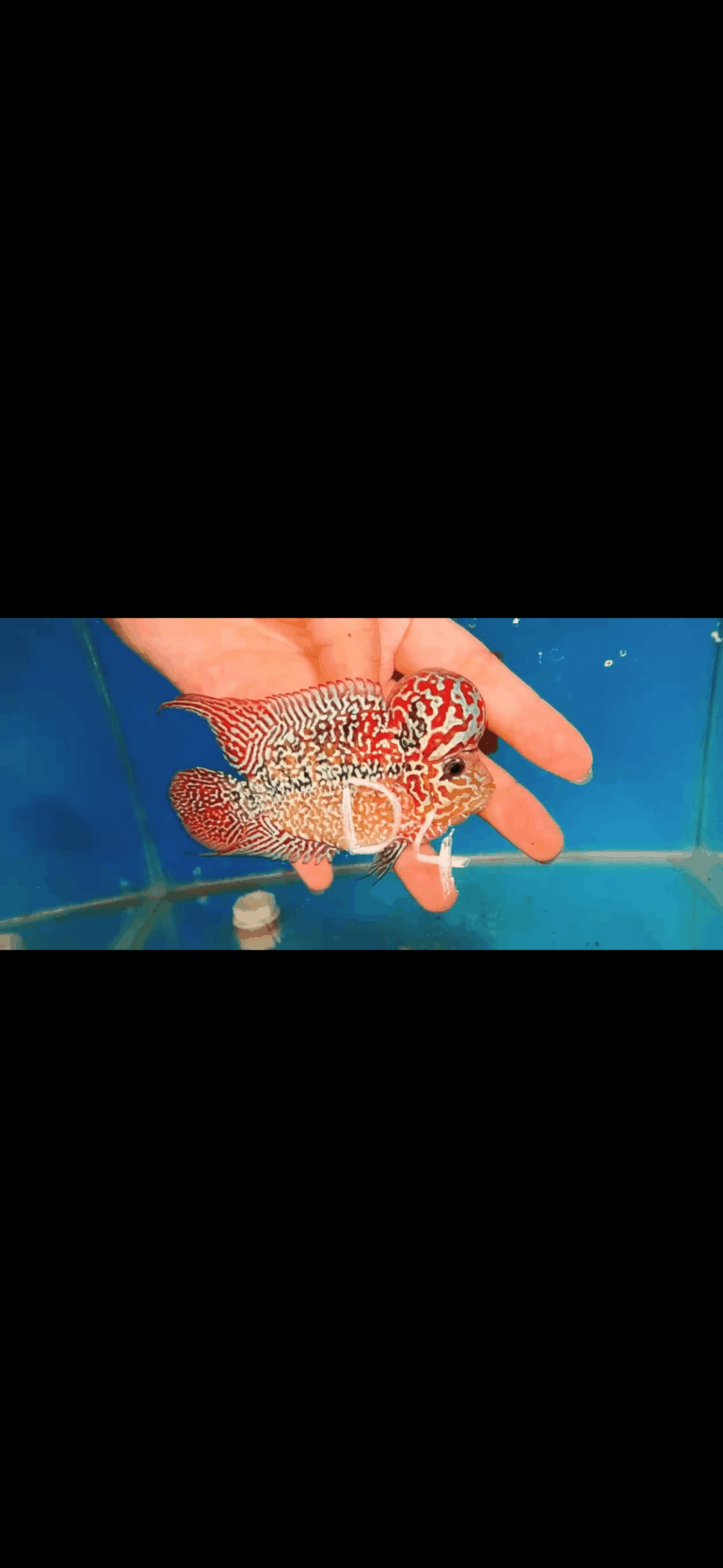Infor
Gallery
Description
Gallery



Description
Moaquatics.com
Use code THANKYOU for 10% OFF
Flowerhorns are stunning, vibrant cichlids known for their distinctive nuchal hump (or “kok”). If you’re considering adding one to your aquarium, here’s a comprehensive care guide:
Tank requirements
Tank size: Flowerhorns are active and can grow up to 16 inches, so a minimum tank size of 75 gallons is recommended for a single Flowerhorn. If you plan on housing multiple Flowerhorns, or if your Flowerhorn is larger, a tank of 90-125 gallons or even larger (150-175 gallons for breeding pairs) is recommended.
Water parameters: Maintain a water temperature between 80-86°F (25-28°C) and a pH level between 7.4 and 8.0. Also, keep the water hardness between 9-20 dGH.
Filtration and aeration: Flowerhorns produce a lot of waste, so a high-quality filtration system is essential. A canister filter is highly recommended, and a circulation pump can be useful to move waste towards the filter. Ensure adequate aeration, notes hygger.
Substrate: Use smooth gravel or sand, or even a bare bottom tank, to prevent injuries as Flowerhorns are known to dig and rearrange the substrate.
Decorations: Keep decorations minimal as Flowerhorns are territorial and may rearrange or damage elaborate setups. Large, smooth rocks or ceramic decorations and driftwood can provide shelter and enrichment.
Lighting: Standard aquarium lighting is generally sufficient.
Diet and nutrition
Omnivorous diet: Flowerhorns are omnivorous and require a protein-rich diet for optimal growth and health.
High-quality pellets: Use high-quality floating pellets specifically formulated for Flowerhorns as a primary food source.
Variety is key: Supplement pellets with live or frozen foods like bloodworms, brine shrimp, krill, earthworms, shrimp, squid, crickets, grasshoppers, mealworms, white worms, nightcrawlers, and black worms. You can also offer occasional vegetables like shelled peas or spinach to aid digestion.
Feeding schedule: Feed small portions 2-3 times daily, ensuring they can consume all the food within 30 seconds. Avoid overfeeding, which can lead to digestive issues.
Behavior and tank mates
Aggressive and territorial: Flowerhorns are known for their aggressive and territorial nature. It’s generally recommended to keep them alone, especially if you are new to keeping Flowerhorns.
Solo housing: Keeping a Flowerhorn alone is often the safest and most stress-free option for the fish, according to hygger.
Potential tank mates (with caution): If you are an experienced fish keeper and decide to attempt a community tank with a Flowerhorn, ensure the tank is sufficiently large (minimum 125 gallons). Compatible tankmates should be large, equally aggressive, and fast enough to defend themselves or escape if necessary. Some possibilities include:
Oscars
Large Cichlids
Plecos (Leopard or Sailfin are good options)
Bichirs
Silver Arowanas
Jaguar Cichlids
Tiger Oscars
Black Pacus
Bristlenose Plecos
Spotted Hoplo Catfish
Avoid small fish and invertebrates: Do not house Flowerhorns with smaller fish or invertebrates as they will likely be eaten quickly.
Monitor behavior: Closely observe all fish when introducing them to ensure compatibility and prevent aggression.
Health and maintenance
Regular water changes: Perform weekly water changes of 25-30% to maintain good water quality.
Test water parameters: Regularly test water for ammonia, nitrite, nitrate, pH, and TDS levels.
Disease prevention: Good water quality, a balanced diet, and a stress-free environment are crucial for preventing common Flowerhorn diseases like White Spot Disease (Ich), Hole-in-the-Head Disease, Swim Bladder Disorder, Fin Rot, and Constipation.
Early detection: Watch for signs of illness such as lethargy, abnormal buoyancy, loss of appetite, white spots, frayed fins, or a bent body.
Quarantine: Isolate new fish before introducing them to the main tank to prevent disease transmission.
Treatment: Consult with a veterinarian or fish expert for diagnosis and treatment of any health issues. Treatments may include medications like Metronidazole or Methylene blue, dietary adjustments, or environmental modifications.
By following these guidelines and providing proper care, you can help your Flowerhorn thrive and enjoy a long and healthy life in your aquarium.

